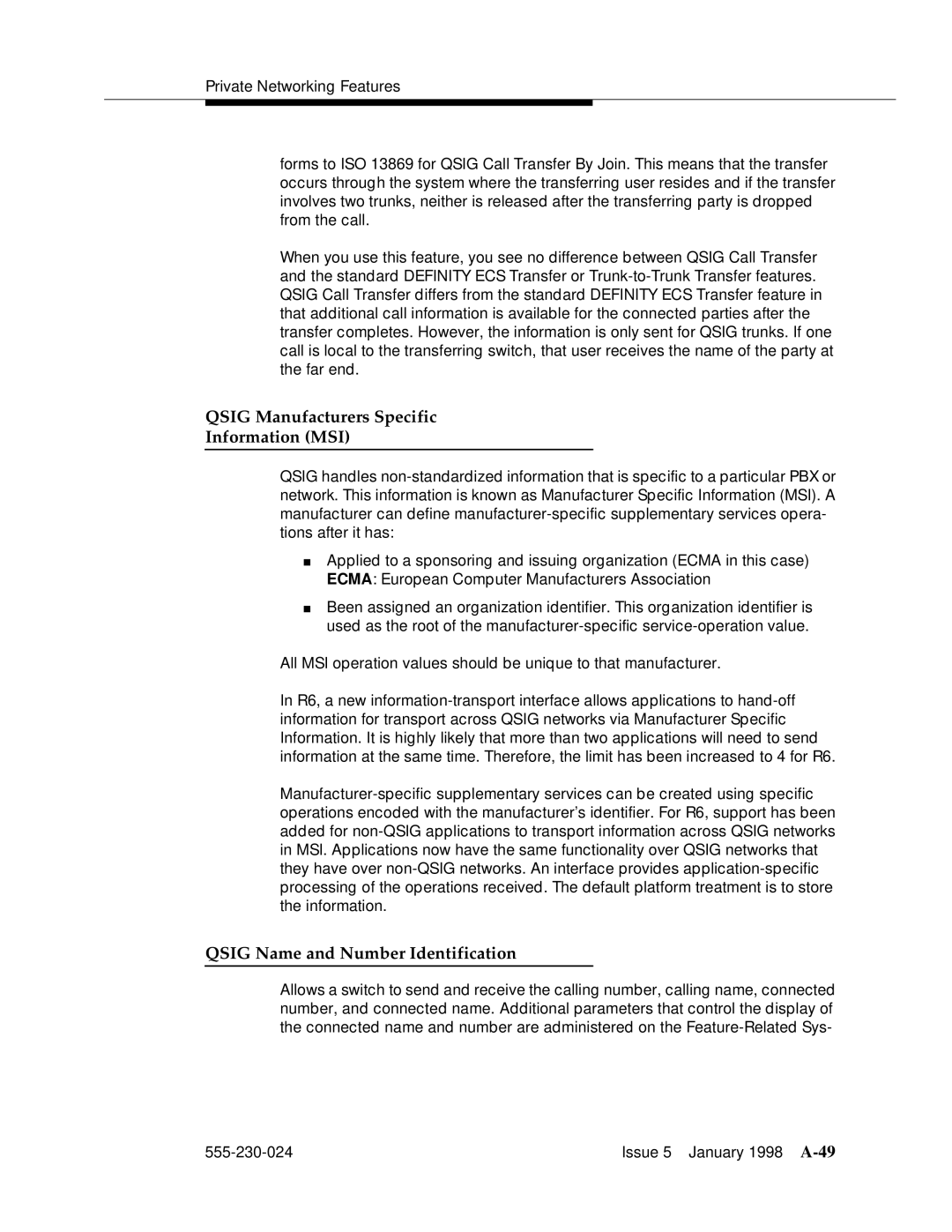
Private Networking Features
forms to ISO 13869 for QSIG Call Transfer By Join. This means that the transfer occurs through the system where the transferring user resides and if the transfer involves two trunks, neither is released after the transferring party is dropped from the call.
When you use this feature, you see no difference between QSIG Call Transfer and the standard DEFINITY ECS Transfer or
QSIG Manufacturers Specific
Information (MSI)
QSIG handles
■Applied to a sponsoring and issuing organization (ECMA in this case) ECMA: European Computer Manufacturers Association
■Been assigned an organization identifier. This organization identifier is used as the root of the
All MSI operation values should be unique to that manufacturer.
In R6, a new
QSIG Name and Number Identification
Allows a switch to send and receive the calling number, calling name, connected number, and connected name. Additional parameters that control the display of the connected name and number are administered on the
Issue 5 January 1998 |
